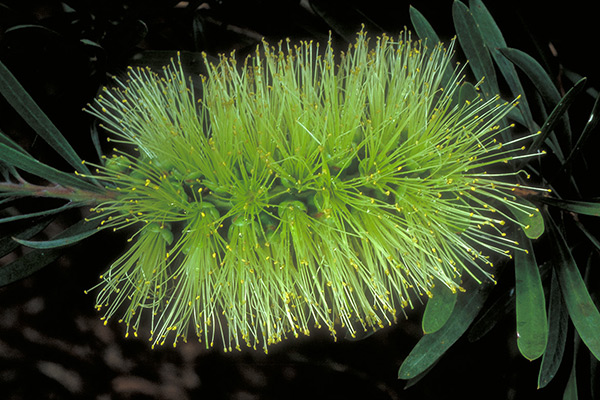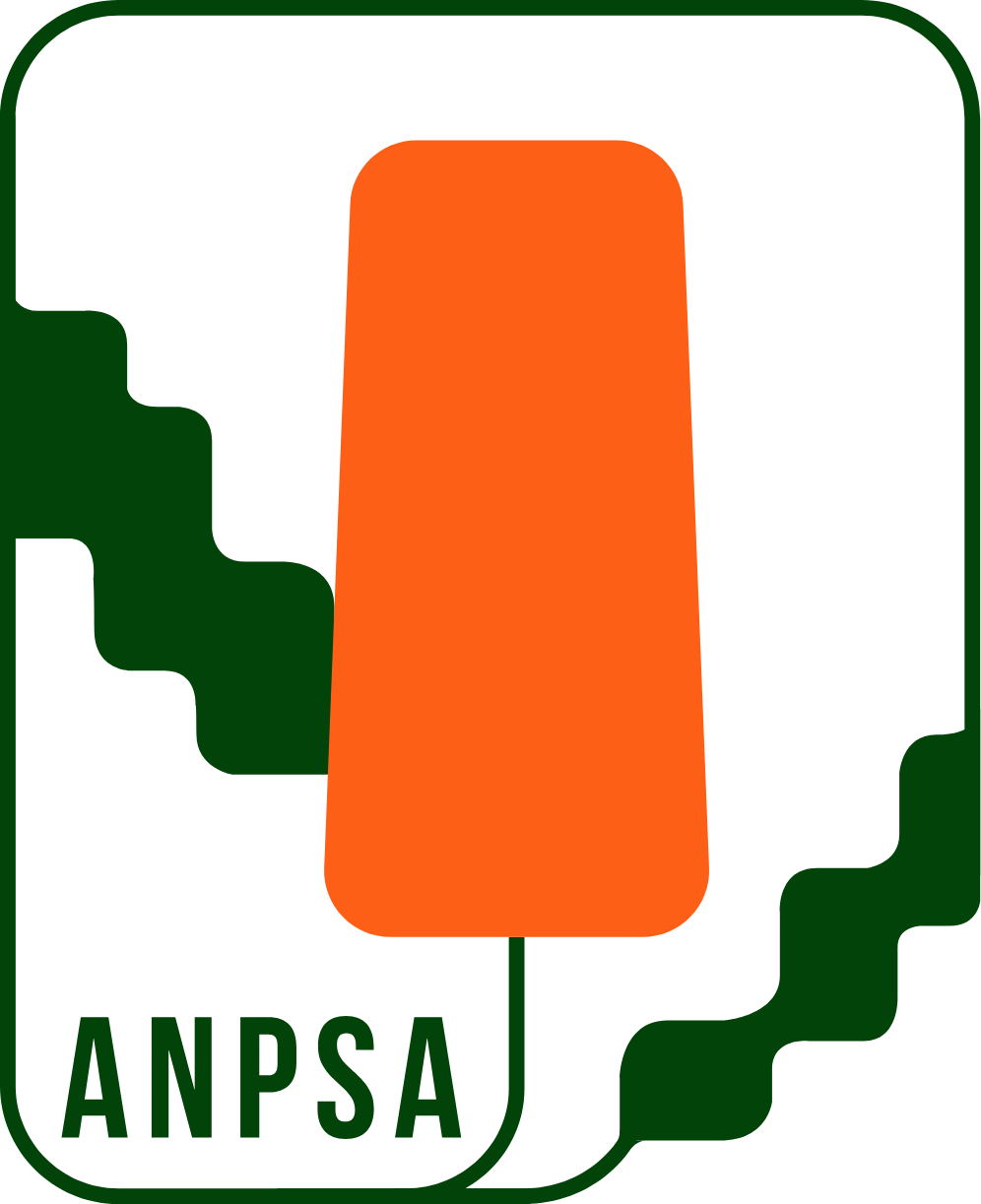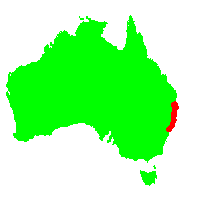General Description:
There is ongoing controversy about whether Melaleuca or Callistemon should be used for the bottlebrush species – see footnote box. Some herbaria have now adopted the name Melaleuca pachyphylla for this species, however, this reclassification has not been adopted in the Australian Plant Census (which is accepted by ANPSA as the authority on Australian Plant nomenclature).
Callistemon pachyphyllus is a small to medium sized shrub, usually reaching around 1 metre in height. It’s common name comes from the sandy, coastal heath habitat which is known as “Wallum”.
Although not widely cultivated, Callistemon pachyphyllus is a hardy plant under a wide range of garden conditions. The “bottlebrush” flower spikes appear in late spring and are usually red in colour. The green flowered form is the variety viridis which is found throughout the range of the species.
The plant responds to annual fertilising after flowering and may be pruned severely if necessary. Many Callistemons can tolerate less than perfect drainage but usually perform best in gardens with reasonable drainage and regular availability of water.
Propagation is easy from both seed and cuttings. The green form could be expected to come true from seed.
Craven’s re-classification has been adopted in a 2013 publication “Melaleucas: their botany, essential oils and uses” by Joseph J. Brophy, Lyndley A. Craven and John C. Doran.

Callistemon pachyphyllus
Photo: Brian Walters
 Australian Native Plants Society (Australia)
Australian Native Plants Society (Australia)